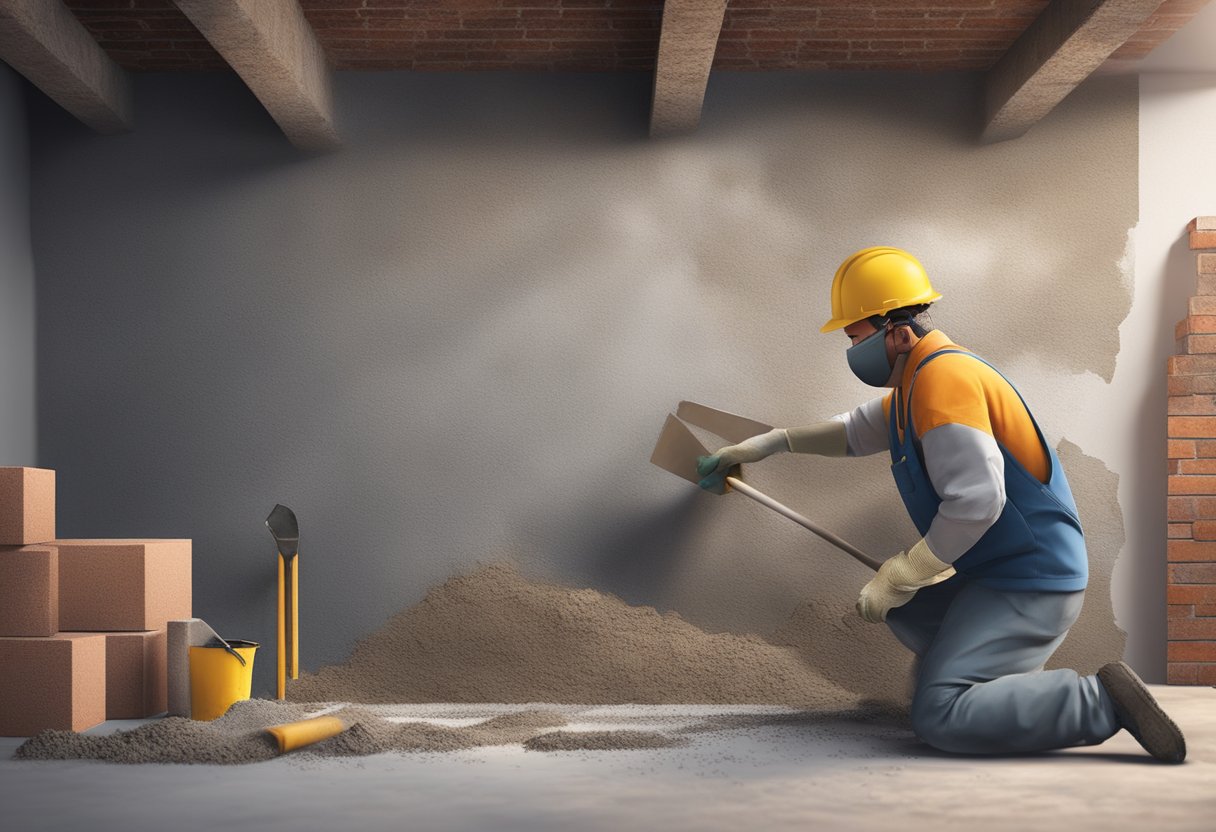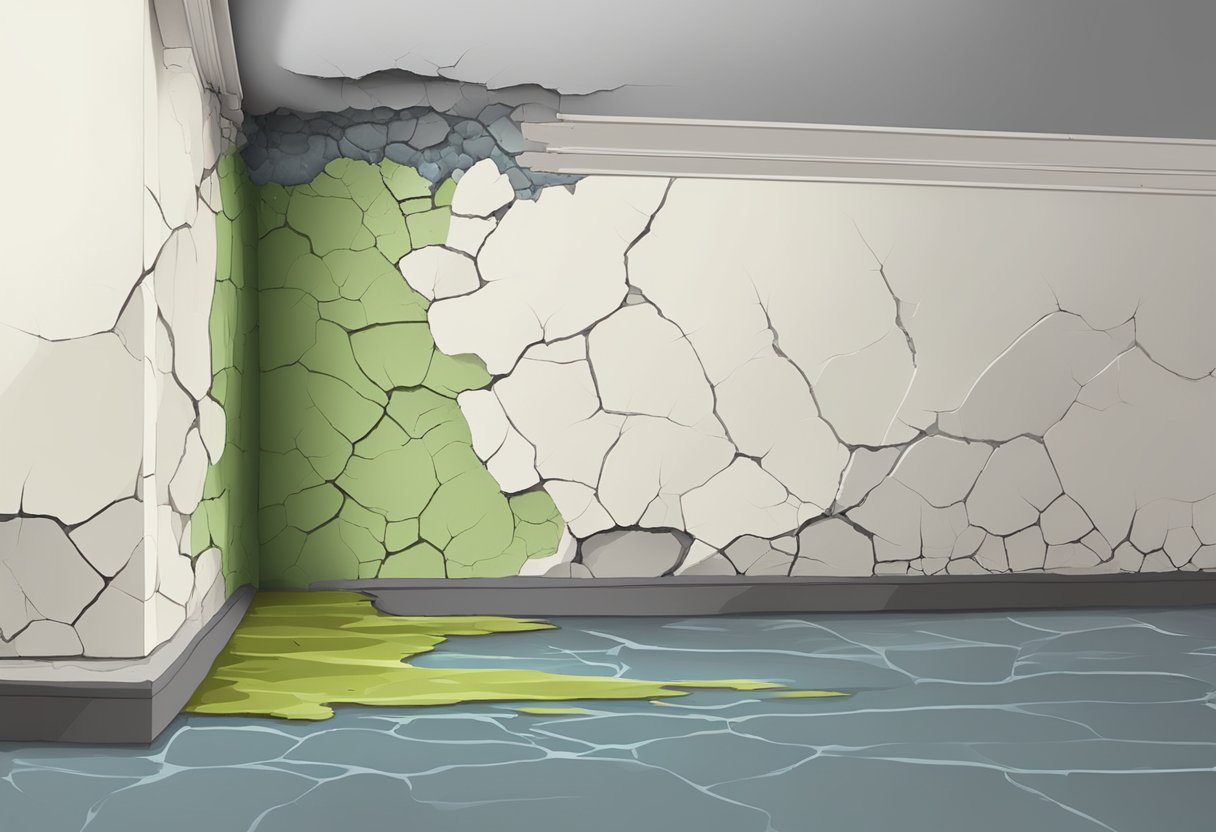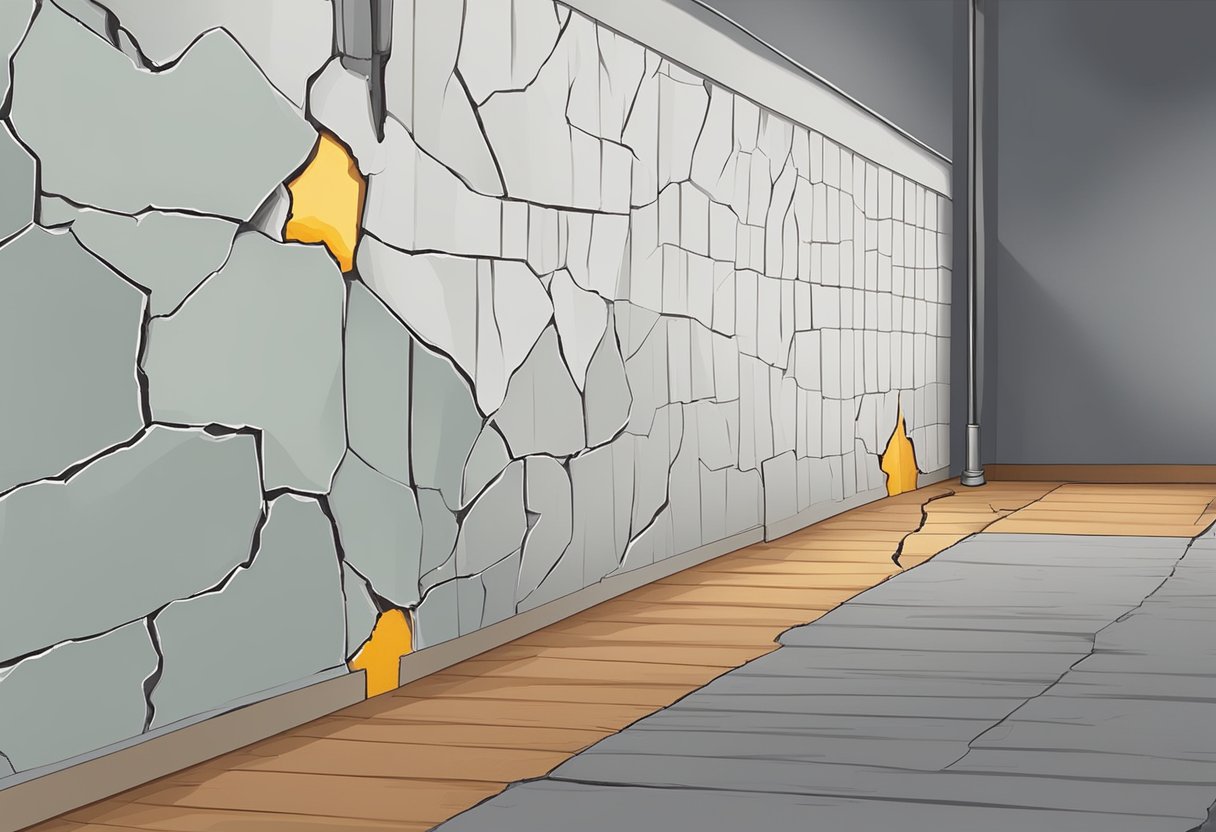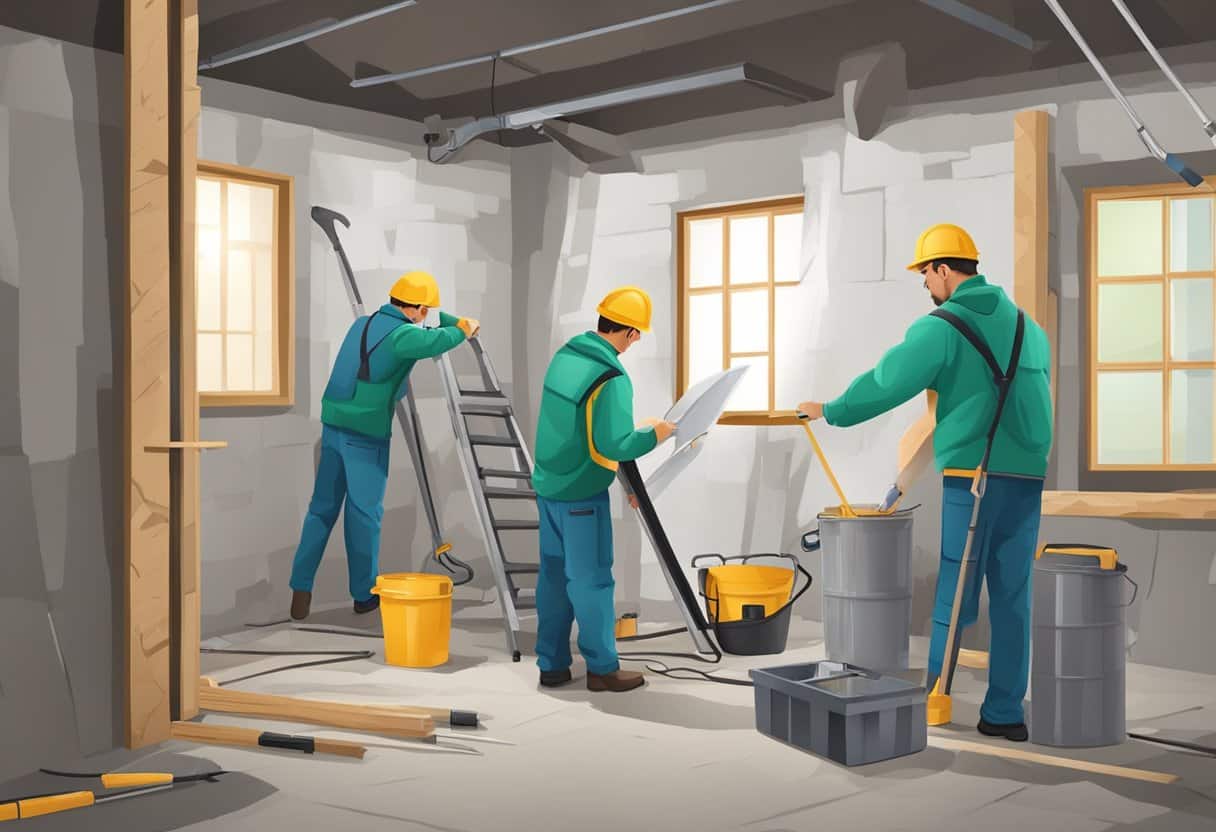Basement wall repair is an essential aspect of home maintenance, particularly for homes with below-ground living spaces or storage areas. Over time, basement walls can experience various forms of stress, such as moisture build-up and water infiltration, leading to cracks and structural weakness. Addressing these issues promptly is crucial to maintaining the integrity of a home’s foundation and preventing more significant problems down the line.

Moisture is a common culprit behind basement wall deterioration. It can enter through fine cracks or porous concrete, causing damage that worsens if left unaddressed. Repairs range from sealing simple cracks with epoxy or urethane injections to more complex stabilization with reinforcements like carbon fiber straps or helical ties for bowing walls. Homeowners should be aware that effective solutions depend on accurately diagnosing the type and extent of wall damage.
When water seeps into a basement, it can lead to mold growth, property damage, and even structural issues. Repairing cracks in a concrete wall not only restores the aesthetic appeal of a basement but also contributes to the overall health of a structure. Homeowners are advised to seek professional assessments for cracks and water infiltration in their basements to ensure the chosen repair method will provide a long-lasting solution to these common problems.
Understanding Basement Wall Problems

Evaluating the integrity of basement walls is critical to maintaining a home’s foundation and preventing potentially severe damage. Understanding the different factors that contribute to basement wall issues is essential for a proper assessment and remedy.
Assessing Damage and Causes
When they inspect a basement, homeowners and professionals alike should look for signs that indicate the health of the foundation. Evaluating structural problems involves identifying any deformities or deterioration in the walls. The presence of horizontal cracks, for instance, can be a red flag suggesting that water pressure from the surrounding soil is exerting undue stress on the foundation.
Types of Wall Cracks and Their Implications
- Hairline Cracks: These are often superficial and may not require immediate repair.
- Vertical Cracks: Typically less serious and often caused by settlement.
- Horizontal Cracks: These are more severe, indicating possible foundation movement due to hydrostatic pressure.
- Stair-Step Cracks: Common in brick or block walls, pointing to possible foundation settlement.
Each type of crack must be carefully analyzed as they can each have unique implications for the structure’s integrity.
The Role of Water Pressure and Soil Conditions
Soil conditions and water pressure play significant roles in basement wall stability. Hydrostatic pressure, or the pressure exerted by a fluid due to gravity, can push against basement walls, especially after heavy rains. Soil type, whether clay-heavy, which retains water, or sandy, which drains quickly, also affects the amount of pressure exerted on basement walls. Regular inspection and maintenance help to mitigate these issues, ensuring the foundation remains robust.
DIY Repair Techniques for Minor Issues

When addressing minor basement wall issues, homeowners can often undertake DIY repairs using simple techniques and readily available tools. Approaching the task with precision and care contributes to effective and lasting repairs.
Tools and Materials Needed
- Tools: Trowel, putty knife, wire brush, shop vacuum
- Materials: Epoxy-based resin, cement or mortar
To repair hairline cracks in a basement wall, one needs a set of tools for both cleaning and repairing the damaged area. A wire brush is used to scrub away loose debris, while a shop vacuum ensures that all dust is removed. For the actual repair, an epoxy is ideal for sealing the cracks, and it can be applied using either a trowel or a putty knife.
Step-by-Step Guide to Seal Minor Cracks
- Clean the Crack: Utilize the wire brush to scrub the crack and surrounding area. Then, vacuum any loose material.
- Prepare the Epoxy: Following the manufacturer’s instructions, prepare the epoxy resin.
- Apply the Epoxy: With the trowel or putty knife, carefully apply the epoxy into the crack, ensuring it’s fully filled.
- Smooth the Surface: After applying the epoxy, smooth it over with the trowel or putty knife to ensure an even surface.
- Allow to Cure: Let the epoxy cure per the product’s guidance before checking for stability.
Prevention Tips for Future Cracks
- Maintain Gutters and Downspouts: Keep these clear to prevent water accumulation near the foundation.
- Soil Grading: Ensure the soil around your home slopes away to minimize water pressure on basement walls.
Regular inspection and maintenance, such as ensuring gutters direct water away from the house and checking for soil erosion, can greatly reduce the risk of future hairline cracks. These preventative measures, paired with prompt repair of minor damages, can extend the life of basement walls and minimize the need for more extensive repairs.
Expert Solutions for Structural Repairs

In addressing basement wall concerns, it is crucial to consider the safety and longevity of one’s home. Professional contractors offer a range of solutions to these structural problems, ensuring stability and integrity.
When to Call a Professional
Recognizing the signs of a structural problem in a basement wall is vital. Homeowners should seek a professional contractor or a structural engineer if they notice walls that are bowing, cracking, or showing signs of moisture damage. It’s best to act promptly, as delays can lead to more significant issues.
Options Available from Contractors
Contractors might propose several methods of structural repairs depending on the severity of the damage:
- Carbon Fiber Straps: These are utilized to reinforce and stabilize walls without significant excavation.
- Pier and Beam Repair: This is considered for foundational issues, especially when the problems are due to soil conditions.
- Wall Anchors: These are installed to address and correct bowing walls, providing long-term stability.
Contractors will choose the most appropriate method after a thorough assessment.
Understanding Repair Costs
The cost of basement wall structural repairs can vary widely. A simple breakdown is as follows:
- Carbon Fiber Straps typically represent a cost-effective solution with minimal disruption.
- Pier and Beam Repair may involve higher costs due to the complexity and labor involved.
- Wall Anchors offer a mid-range price point, balancing effectiveness with invasive installation.
Ultimately, obtaining detailed estimates from a professional provides clarity regarding investment in the home’s structural health.
Waterproofing and Preventive Measures

Effective basement wall repair includes the proactive application of waterproofing and preventive strategies to mitigate the risk of moisture damage. Understanding the nuances of both interior and exterior solutions, along with measures to ensure proper drainage, is essential for maintaining a dry and structurally sound basement.
Interior and Exterior Waterproofing Techniques
Interior waterproofing typically involves the use of sealants and coatings that can be applied directly to the basement walls. These products are designed to block out moisture and are suitable for handling minor dampness and leakage issues. For a reliable prevention strategy, opting for high-quality waterproofing materials is crucial.
On the other hand, exterior waterproofing is a more extensive process. It often requires excavation around the home’s foundation to apply a waterproof coating or membrane to the exterior walls. This approach is highly effective against significant groundwater intrusion and may also involve the installation of a drainage system to redirect water away from the foundation.
Improving Drainage and Redirecting Water Away
Poor drainage can exacerbate moisture issues in a basement. To combat this, homeowners must monitor and maintain their gutters and downspouts to ensure water flows away from the home’s foundation. Properly directed downspouts and carefully graded landscaping create an effective means of diverting water.
Moreover, integrating a sump pump into a basement’s moisture control plan can be instrumental. A sump pump actively removes water that has accumulated in a sump basin, typically located in the lowest part of a basement. This system works in tandem with an interior drainage system to prevent water from rising to the level of the basement floor.
Installing Support Systems against Hydrostatic Pressure
Hydrostatic pressure is the force of groundwater pressing against the basement walls. Over time, this pressure can cause cracking and serious structural issues. To fortify basement walls against this pressure, homeowners can invest in reinforcement strategies, such as carbon fiber straps or steel I-beams. These supports brace the wall and distribute the pressure to prevent further damage.
In areas where high water tables are a persistent concern, the installation of a proper drainage system outside the foundation, paired with a robust waterproofing strategy, ensures that hydrostatic pressure does not compromise the basement walls. Regular inspection and repair of these systems are vital to ensure they operate effectively and provide long-term protection.
Maintaining Your Basement Walls Post-Repair
After repairing your basement walls, ongoing maintenance is key to ensuring their longevity and structural integrity. This includes periodic inspections, proper cleaning, and controlling the basement’s humidity levels.
Regular Inspections for Early Detection
To prevent small issues from becoming major problems, one should perform regular inspections of the basement walls. Look out for new cracks or movement, signs of mildew or mold, and any indications of efflorescence, which is a white, powdery residue that can indicate water infiltration. Early detection and prompt response are crucial in maintenance.
Cleaning and Maintenance Tips
Effective cleaning helps in maintaining the walls’ condition post-repair. Here are a few tips:
- Use a mild detergent and a stiff brush to clean the walls and remove any dirt or residue.
- Check for and repair any minor cracks or holes to prevent moisture penetration.
- Inspect and maintain any waterproofing systems, such as interior weeping tiles or exterior waterproof membranes, to ensure they are functioning properly.
Reducing Humidity and Ventilation Best Practices
Managing the humidity level in a basement is essential for preventing the growth of mold and mildew. Implementing the following practices can help:
- Use a dehumidifier to maintain relative humidity below 60%.
- Ensure proper ventilation to circulate air and reduce moisture levels.
- Insulate pipes to prevent condensation, and repair any plumbing leaks promptly.
By adhering to these maintenance, inspection, and moisture control strategies, one can effectively extend the life of basement walls post-repair.

 CALL US NOW
CALL US NOW



